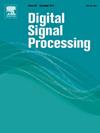A deep clustering framework for underwater image recognition
IF 2.9
3区 工程技术
Q2 ENGINEERING, ELECTRICAL & ELECTRONIC
引用次数: 0
Abstract
Underwater image recognition plays a crucial role in assessing the health status of marine ecosystems. By utilizing underwater cameras and image recognition technology, researchers can monitor the biodiversity, population numbers, growth status, and overall structure and functionality of ecosystems in the ocean. However, the problem of marine ecology assessment always occurs in dynamic and open environments, and discoveries of unknown new species are often made. Existing works which applied classification methods directly may not address this situation well. Therefore, unsupervised learning is needed to cluster these newly emerged species. However, due to strong noise interference in underwater images, clustering the unlabeled samples directly is difficult. To address this issue, we propose a two-stage training framework that can learn discriminative knowledge from labeled data for clustering new classes. Its core idea is to utilize pseudo-labeling to train the model, and then strengthens the capability of clustering by leveraging the consistency between the labeled and unlabeled data. Furthermore, contrastive learning is also used to optimize the model's representation in the embedding space. Experimental results on the WildFish dataset of over 5000 species verified the effectiveness of the proposed method in open-set underwater image recognition.
求助全文
约1分钟内获得全文
求助全文
来源期刊

Digital Signal Processing
工程技术-工程:电子与电气
CiteScore
5.30
自引率
17.20%
发文量
435
审稿时长
66 days
期刊介绍:
Digital Signal Processing: A Review Journal is one of the oldest and most established journals in the field of signal processing yet it aims to be the most innovative. The Journal invites top quality research articles at the frontiers of research in all aspects of signal processing. Our objective is to provide a platform for the publication of ground-breaking research in signal processing with both academic and industrial appeal.
The journal has a special emphasis on statistical signal processing methodology such as Bayesian signal processing, and encourages articles on emerging applications of signal processing such as:
• big data• machine learning• internet of things• information security• systems biology and computational biology,• financial time series analysis,• autonomous vehicles,• quantum computing,• neuromorphic engineering,• human-computer interaction and intelligent user interfaces,• environmental signal processing,• geophysical signal processing including seismic signal processing,• chemioinformatics and bioinformatics,• audio, visual and performance arts,• disaster management and prevention,• renewable energy,
 求助内容:
求助内容: 应助结果提醒方式:
应助结果提醒方式:


